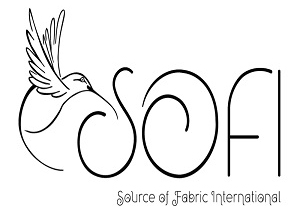The denim fabric has long been a staple in the fashion industry, prized for its durability and timeless appeal. As demand for denim continues to rise, understanding wholesale prices becomes crucial for retailers and manufacturers looking to maximize their profit margins. With various factors influencing these prices, from fabric quality to market trends, staying informed is essential.
Wholesale pricing can significantly impact business decisions, whether one is a small boutique or a large-scale manufacturer. By exploring the nuances of denim fabric wholesale pricing, businesses can make smarter purchasing choices, ensuring they remain competitive in an ever-evolving market. This article delves into the key elements affecting wholesale prices and offers insights to help navigate this dynamic landscape.
Overview of Denim Fabric
Denim fabric is a sturdy textile primarily made from cotton. It’s characterized by a unique weave known as twill, where the threads pass over and under each other, creating a diagonal ribbing. This structure enhances durability, making denim suitable for various applications, especially in fashion.
Denim comes in several types, including raw, washed, and stretched. Raw denim remains untreated, often resulting in a stiff texture. Washed denim undergoes processes that soften the fabric, providing a more comfortable feel. Stretch denim incorporates elastic fibers, offering flexibility and comfort.
The color of denim varies widely, with the classic indigo being the most recognized. Other washes include light, dark, and acid wash, each providing a distinct look. Various finishes, like distressed or treated, add further character and style.
Denim’s history traces back to the late 19th century when it gained popularity for its strength and practicality. Today, it remains a staple in casual and formal attire, appealing to a broad audience. Understanding denim varieties helps retailers and manufacturers choose the right products for their inventory.
Factors Influencing Denim Fabric Wholesale Price
Understanding the factors that influence denim fabric wholesale prices helps businesses make better decisions. Two main aspects play crucial roles in determining these prices: production costs and supply and demand dynamics.
Production Costs
Production costs cover all expenses involved in making denim fabric. These include raw materials, labor, machinery maintenance, and overhead costs. High-quality cotton typically raises production costs, while cheaper substitutes can lower them. Labor costs fluctuate based on location, affecting the overall price of manufacturing denim. Additional factors like energy costs and factory efficiency also impact total production expenses. In summary, any changes in these costs directly affect the wholesale price of denim fabric.
Supply and Demand Dynamics
Supply and demand significantly influence denim fabric pricing in the market. When demand from retailers increases, prices typically rise due to limited supply. Conversely, if supply exceeds demand, prices often drop. Seasonal trends and fashion shifts can also affect this interplay. For example, specific colors or styles may see a surge in popularity, resulting in higher demand and elevated prices. Tracking these trends helps retailers gauge potential price changes and optimize their inventory accordingly.
Types of Denim Fabrics and Their Prices
Different types of denim fabrics feature various characteristics and prices. Knowing these details helps retailers choose suitable options for their inventory.
Raw Denim
Raw denim, or untreated denim, has a stiff texture and deep indigo color. Prices for raw denim range from $6 to $15 per yard, depending on quality. This type of denim maintains its original state, allowing for personalized fading and distressing over time.
Pre-Washed Denim
Pre-washed denim undergoes a washing process before reaching consumers. This fabric is softer and more comfortable right away. Prices for pre-washed denim usually range from $5 to $12 per yard. Different washes create varying shades, from light to dark, thus influencing their market price.
Key Players in the Denim Fabric Market
Key players in the denim fabric market include a mix of manufacturers, wholesale suppliers, and retailers who shape pricing and availability. These entities significantly influence market dynamics and help maintain fabric quality.
- Denim Manufacturers:
- Companies like Cone Denim and Candiani Denim produce high-quality denim. They offer a range of fabrics, from raw to treated, catering to various customer needs.
- Raw Material Suppliers:
- Cotton suppliers play a vital role, as they provide the primary ingredient for denim production. The quality and pricing of cotton greatly affect the overall fabric price.
- Fabric Wholesalers:
- Wholesalers help distribute various denim types to retailers and manufacturers. Their pricing strategies often depend on stock levels and demand trends, impacting wholesale costs.
- Fashion Brands:
- Brands like Levi’s and Wrangler drive denim sales. Their large purchasing volumes and trends influence wholesale pricing by creating significant demand.
- Retailers:
- Both small boutiques and large department stores affect the market. They play a critical role in identifying consumer preferences that can shift demand and influence pricing.
- Online Retailers:
- E-commerce platforms expand access to denim, affecting how consumers shop. They often have different pricing models that can reflect lower overhead costs.
Understanding these key players helps retailers and manufacturers navigate the denim fabric market effectively. Collaborating with reputable suppliers and keeping informed on market changes can enhance a business’s competitive edge.
Conclusion
Navigating the denim fabric wholesale market requires a keen understanding of pricing dynamics. Retailers and manufacturers can enhance their competitiveness by staying informed about the factors influencing costs. By recognizing the significance of fabric quality, supply and demand trends, and key market players, they can make smarter purchasing decisions. Whether sourcing quilting fabric wholesale, evaluating if Fabric Wholesale Direct is legit, or securing bolts of fabric wholesale, understanding these elements is crucial.
With the right insights into denim varieties and pricing strategies, businesses can better align their inventory to meet consumer preferences. This knowledge not only supports effective pricing but also fosters a stronger connection to the evolving fashion landscape. Understanding where Wholesale Direct is located can further streamline sourcing decisions. Embracing these strategies will ultimately lead to greater success in the ever-changing denim industry.
Frequently Asked Questions
What is the significance of wholesale prices in the denim fabric market?
Understanding wholesale prices is crucial for retailers and manufacturers as it directly affects their purchasing decisions. Staying informed about these prices helps businesses, from small boutiques to large manufacturers, make competitive choices and optimize inventory in the ever-changing fashion industry.
What types of denim fabrics are available?
There are several types of denim fabrics, including raw, washed, and stretch denim. Raw denim is known for its stiff texture, while washed denim is softer and more comfortable. Stretch denim contains elastic fibers for added flexibility, catering to various consumer preferences and styles.
How do production costs affect wholesale prices?
Production costs significantly impact wholesale prices of denim fabrics. These costs include raw materials, such as high-quality cotton, labor, and overhead expenses. Higher production costs generally lead to increased wholesale prices, which retailers need to consider when purchasing denim.
How does supply and demand influence denim pricing?
Supply and demand dynamics play a critical role in denim pricing. When demand from retailers rises, prices are likely to increase. Conversely, an oversupply can lead to price drops. Seasonal trends and fashion shifts further complicate this balance, affecting market prices.
Who are the key players in the denim fabric market?
Key players include manufacturers like Cone Denim and Candiani Denim, cotton suppliers, fabric wholesalers, and fashion brands such as Levi’s and Wrangler. Understanding these players helps retailers navigate the market effectively and optimize their sourcing strategies.
What historical factors have shaped the denim market?
The history of denim dates back to the late 19th century, evolving from workwear to a fashion staple. This transformation has influenced denim’s appeal today, making it popular in both casual and formal attire, which retailers need to acknowledge in their product selection.
How do different washes affect denim pricing?
Various denim washes create different shades and textures, impacting pricing. Pre-washed denim, which offers more comfort, typically ranges from $5 to $12 per yard, while raw denim, known for its stiff texture, can be priced between $6 and $15 per yard.
Why is it important to understand denim varieties?
Retailers and manufacturers must understand denim varieties to select the right products for their inventory. Knowledge of different types and qualities of denim helps businesses meet consumer demand and enhance their competitiveness in the market.


